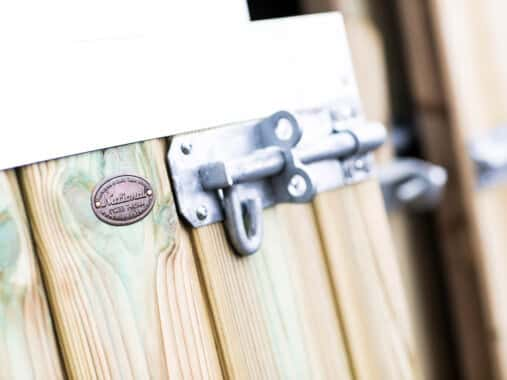Eventually, after many years, galvanised steel will rust. History and data shows that galvanising can provide between 30 to 150 years of protection for steel depending on several factors including what the steel is exposed too and the local environmental conditions that surrounds it. In our experience, most structures that are built with galvanised steel last 50 years or more before showing signs of rust.
Galvanised steel is all around us, used in a variety of industries including road, rail, energy plants, oil and gas, agriculture, water, waste, sports, and leisure. It can also play a key role for bridges, facades, gates, balconies and of course, buildings. Wherever there is a risk for corrosion of steel, galvanising should be used for its unrivalled (and proven) ability to last an exceptionally long time and resist rust.
What is meant by galvanised steel?
Galvanisation is a zinc coating applied over the top of steel. Galvanised steel prevents rust and corrosion for longer than paint will, often for 50 years or more.
Metals can be galvanised in more than one way, but the oldest and most popular type of galvanisation process is hot dipped galvanising. Hot dip galvanising is the process by which steel is immersed into molten zinc to obtain a nice, thick layer of zinc on top of the base metal that is metallurgically bonded to it, making it extra resistant to corrosion.
What is the galvanisation process?
The hot dip galvanising process involves three key steps: surface preparation, galvanising, and inspection.
Surface preparation – to ensure a good bond between the steel and zinc coating, there are three cleaning steps:
degreasing, pickling, and fluxing. Grease and oil residue are removed, followed by acid pickling to remove iron oxide. Lastly, the steel is fluxed to strip any remaining oxides and then the steel is coated with a protective layer to prevent additional oxidation occurring before galvanising.
Galvanising – The steel is dipped into molten zinc at an angle to allow the zinc to flow into, over and through the entire piece. The iron in the steel metallurgically reacts with the zinc to form a succession of zinc-iron intermetallic layers and an outer layer of pure zinc.
Inspection – for quality control purposes, newly galvanised metal should be inspected to ensure the quality of coating and compliance with thickness requirements.
How does galvanising prevent rust?
To help explain this, a quick science lesson is in order:
Corrosion is how metal breaks down as oxygen attacks the surface.
Rust is the special type of corrosion experienced by iron.
Oxygen creates iron oxide, which crumbles away from the body of the metal, exposing fresh metal to oxygen.
Metals that do not rust, such as stainless steel and aluminium, form an oxide layer on the surface which resists further corrosion. Zinc is another metal that oxidises without rusting and it also bonds well to steel.
Therefore, coating steel with a layer of zinc (galvanisation) will ensure steel prevents rust from setting in for many years and will certainly last much longer than a paint covering! Zinc prevents oxygen and water from steel beneath.
Why does galvanised steel not last forever?
Galvanised steel is exceptionally durable, but there are still factors that will affect it, such as the conditions of its local environment. Things like…
– air humidity,
– exposure to salt (coastal environments),
– whether the steel is buried in soil (like the base of a fence post),
– contact with moss/ lichen,
– exposed to moisture,
– repeated exposure to sulphur dioxide pollution (urban environments),
– contact with strong alkalis such as plaster and cement,
– or situations where the coating is frequently wet or soaked…
are all conditions that will impair how long galvanisation holds off rot and rust.
Here at National Timber Buildings, quality materials are particularly important to us. As a household name in wooden horse stables and bespoke timber buildings, we design and manufacture all timber structures in house to ensure that we use the best materials possible. Tanalised®, quality wood and galvanised steel are among them to guarantee exceptional durability and longevity of our buildings.

Get in touch
Want to know more about choosing low-cost, high-quality stables? We’re happy to answer all your questions. Call 01233 884502, email info@nationalstables.co.uk or send us a message and we will respond ASAP.





